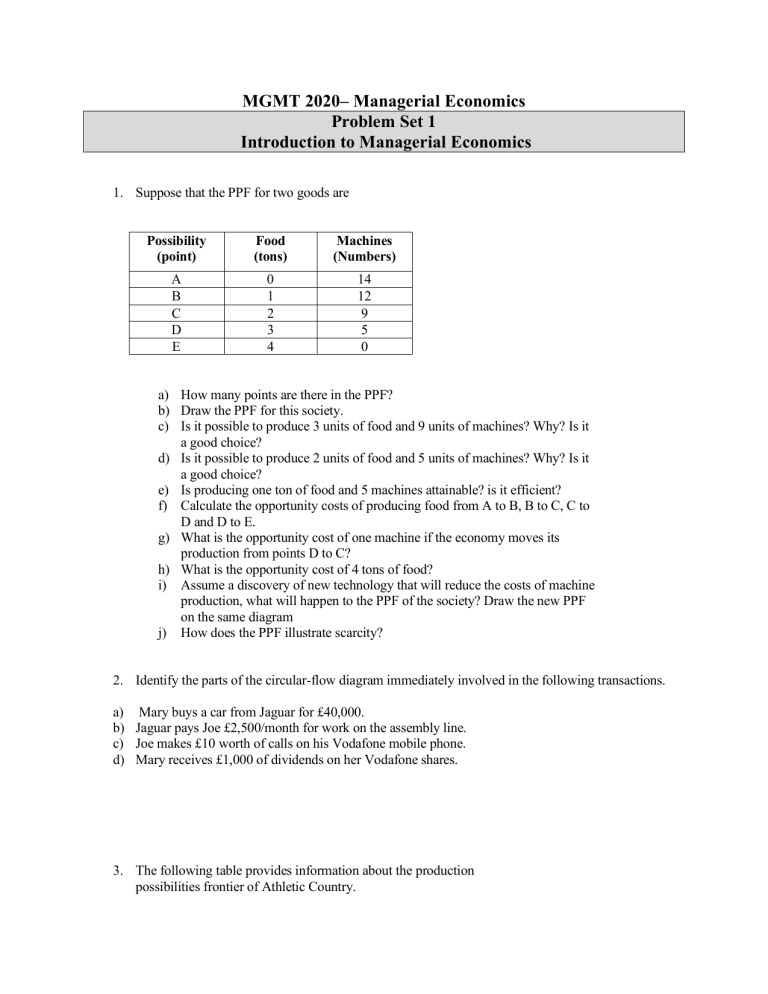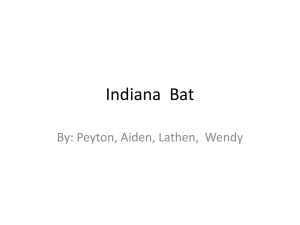
MGMT 2020– Managerial Economics Problem Set 1 Introduction to Managerial Economics 1. Suppose that the PPF for two goods are Possibility (point) Food (tons) Machines (Numbers) A B C D E 0 1 2 3 4 14 12 9 5 0 a) How many points are there in the PPF? b) Draw the PPF for this society. c) Is it possible to produce 3 units of food and 9 units of machines? Why? Is it a good choice? d) Is it possible to produce 2 units of food and 5 units of machines? Why? Is it a good choice? e) Is producing one ton of food and 5 machines attainable? is it efficient? f) Calculate the opportunity costs of producing food from A to B, B to C, C to D and D to E. g) What is the opportunity cost of one machine if the economy moves its production from points D to C? h) What is the opportunity cost of 4 tons of food? i) Assume a discovery of new technology that will reduce the costs of machine production, what will happen to the PPF of the society? Draw the new PPF on the same diagram j) How does the PPF illustrate scarcity? 2. Identify the parts of the circular-flow diagram immediately involved in the following transactions. a) Mary buys a car from Jaguar for £40,000. b) Jaguar pays Joe £2,500/month for work on the assembly line. c) Joe makes £10 worth of calls on his Vodafone mobile phone. d) Mary receives £1,000 of dividends on her Vodafone shares. 3. The following table provides information about the production possibilities frontier of Athletic Country. Bats Rackets 0 100 200 300 400 500 420 400 360 300 200 0 a) Plot and connect these points to create Athletic Country's production possibilities frontier. b) If Athletic Country currently produces 100 bats and 400 rackets, what is the opportunity cost of an additional 100 bats? c) If Athletic Country currently produces 300 bats and 300 rackets, what is the opportunity cost of an additional 100 bats? d) Why does the additional production of 100 bats in part (c) cause a greater trade-off than the additional production of 100 bats in part (b)? e) Suppose Athletic Country is currently producing 200 bats and 200 rackets. How many additional bats could they produce without giving up any rackets? How many additional rackets could they produce without giving up any bats? f) Is the production of 200 bats and 200 rackets efficient? Explain.

